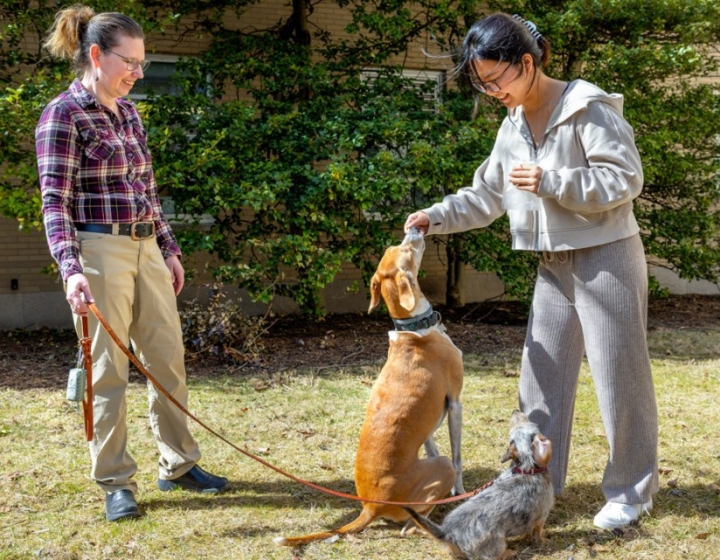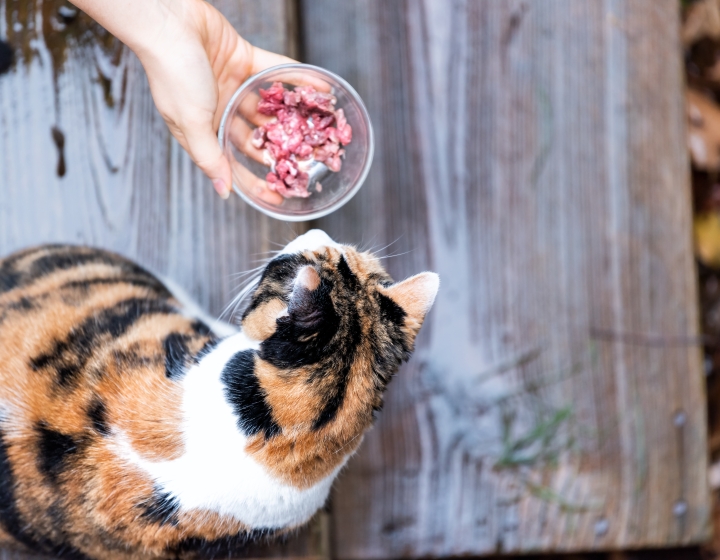Van de Walle wins 2020 Schwartz award
A researcher studying why some mammals develop breast cancer and others don’t is one of two winners of a 2020 Schwartz Research Fund for Women and other Underrepresented Faculty in the Life Sciences.
 Created through support from Joan Poyner Schwartz ’65 and Ronald H. Schwartz ’65, the award will provide $25,000 apiece to Angela Poole, assistant professor of nutritional sciences in the College of Human Ecology, and Gerlinde Van de Walle, associate professor of microbiology and immunology at the Baker Institute for Animal Health.The funding helps support pilot experiments for preliminary data, or the launch of an innovative research direction.
Created through support from Joan Poyner Schwartz ’65 and Ronald H. Schwartz ’65, the award will provide $25,000 apiece to Angela Poole, assistant professor of nutritional sciences in the College of Human Ecology, and Gerlinde Van de Walle, associate professor of microbiology and immunology at the Baker Institute for Animal Health.The funding helps support pilot experiments for preliminary data, or the launch of an innovative research direction.
“We appreciate the Schwartzes’ consistent commitment supporting Cornell faculty in breakthrough innovation,” said Yael Levitte, associate vice provost for faculty development and diversity.
The Schwartzes were both chemistry majors in the College of Arts and Sciences prior to long careers at the National Institutes of Health, where they became pioneers in promoting the work and careers of women in the life sciences.
Poole will use her award to conduct preliminary studies on relationships between a gene called AMY1 that codes for amylase, a salivary enzyme that breaks down starch, and a bacteria in the mouth called Porphyromonas, which contributes to periodontal disease.
In previous research, Poole found that more copies of the AMY1 gene correlated with higher levels of Porphyromonas. The current study will take this association a step further, to determine if such a relationship truly exists and how it works.
The study will involve determining AMY1 gene copy number and using saliva samples to try to unravel whether gene functions could be involved in promoting biofilms containing Porphyromonas in the mouth. If they find a relationship between an individual’s genotype and biofilm formation, Poole and colleagues will be able to investigate ways to disrupt the process and possibly prevent periodontal disease.
Also, if such a relationship does exist, it opens the door for the use of genetic profiling and personalized medicine.
“If we had evidence that says, look, most patients [with high levels of Porphyromonas] have a higher AMY1 copy number, we can genotype you at birth and say, guess what, you should proactively try to prevent this,” Poole said.
Poole plans to use saliva samples and genotyping data she collected in previous research. This study will provide early results she could use to apply for a National Institutes of Health R01 grant, which would then allow her to recruit and study periodontitis patients.
Van de Walle’s award will help her to develop a new mouse model for comparing mammary gland cancers across different mammal species. Species including humans, dogs, cats and some wild carnivores develop mammary cancer at high rates, while other species – including horses, pigs, cows and other types of wild carnivores – rarely get mammary cancer.
“We want to understand why these differences are there, to potentially give us better insight into why mammary cancer develops,” Van de Walle said. She hopes to uncover the molecular mechanisms underlying mammals’ susceptibility or resistance to mammary cancer.
She is developing a mouse model that will allow researchers to transplant mammary gland tissue fragments from any mammal and then expose the mouse to carcinogens to see how this transplanted mammary tissue responds in an in vivo, yet controlled setting. This is helpful since it is not always feasible to expose the actual mammal to carcinogens, especially when talking about rare and wild mammals. A published paper on this model would make a larger grant application more competitive.
“It is sometimes challenging to get significant external funding for this novel concept,” Van de Walle said, adding the Schwartz award will help her create a new tool and acquire preliminary data for such innovative research.
Also, Taryn Bauerle, associate professor of horticulture, received a $1,500 grant to support conference travel.
By Krishna Ramanujan
A version of story originally appeared in the Cornell Chronicle.




